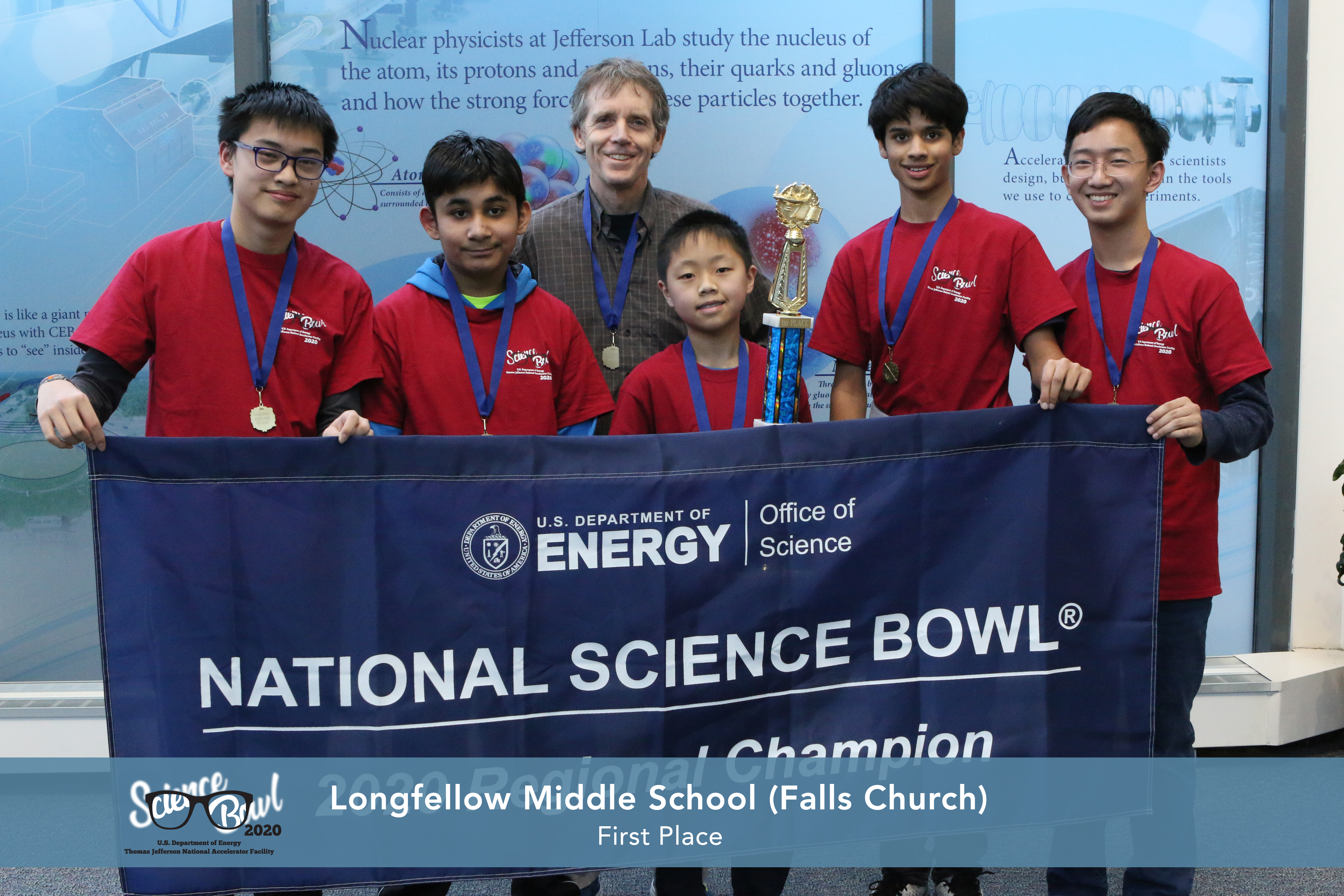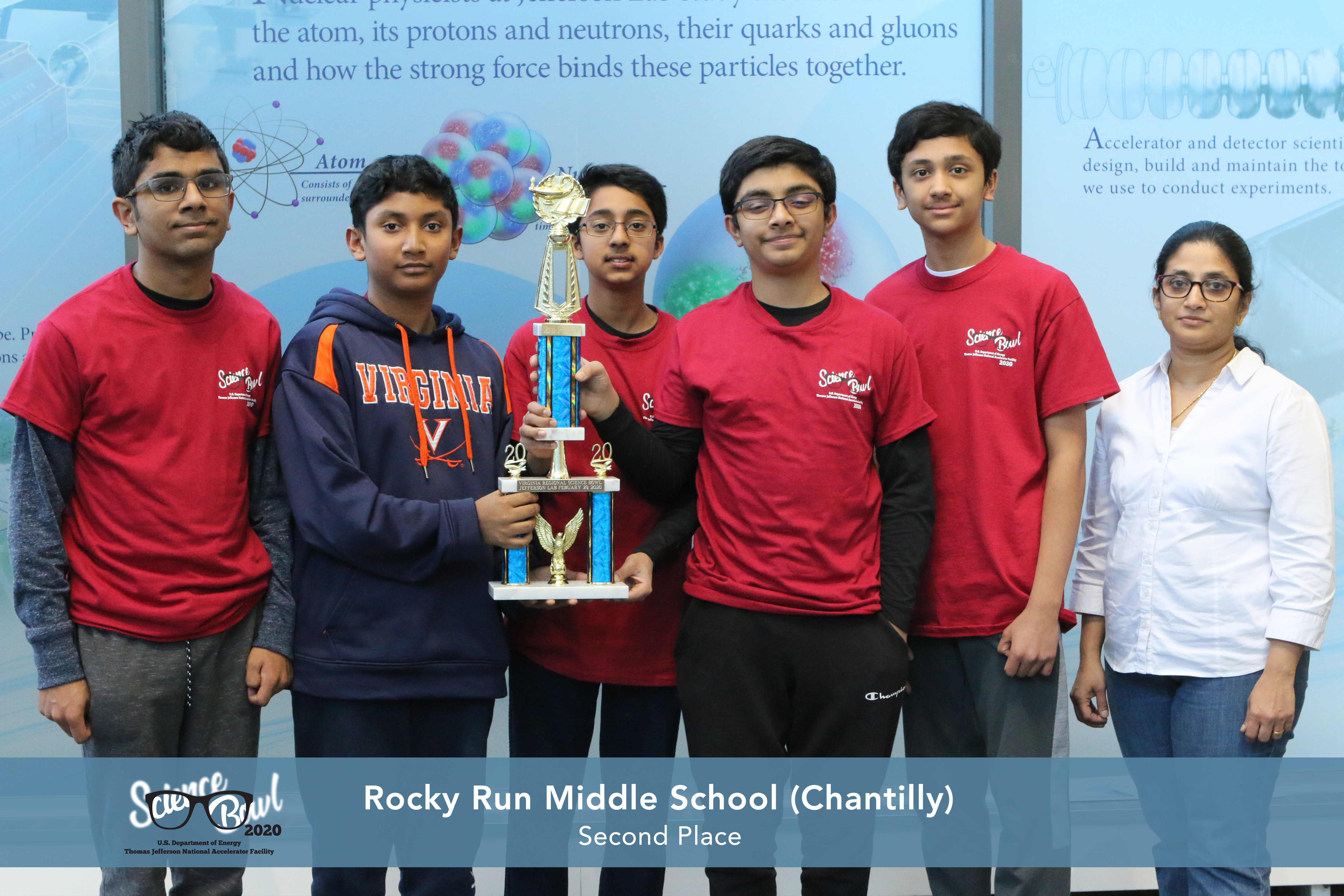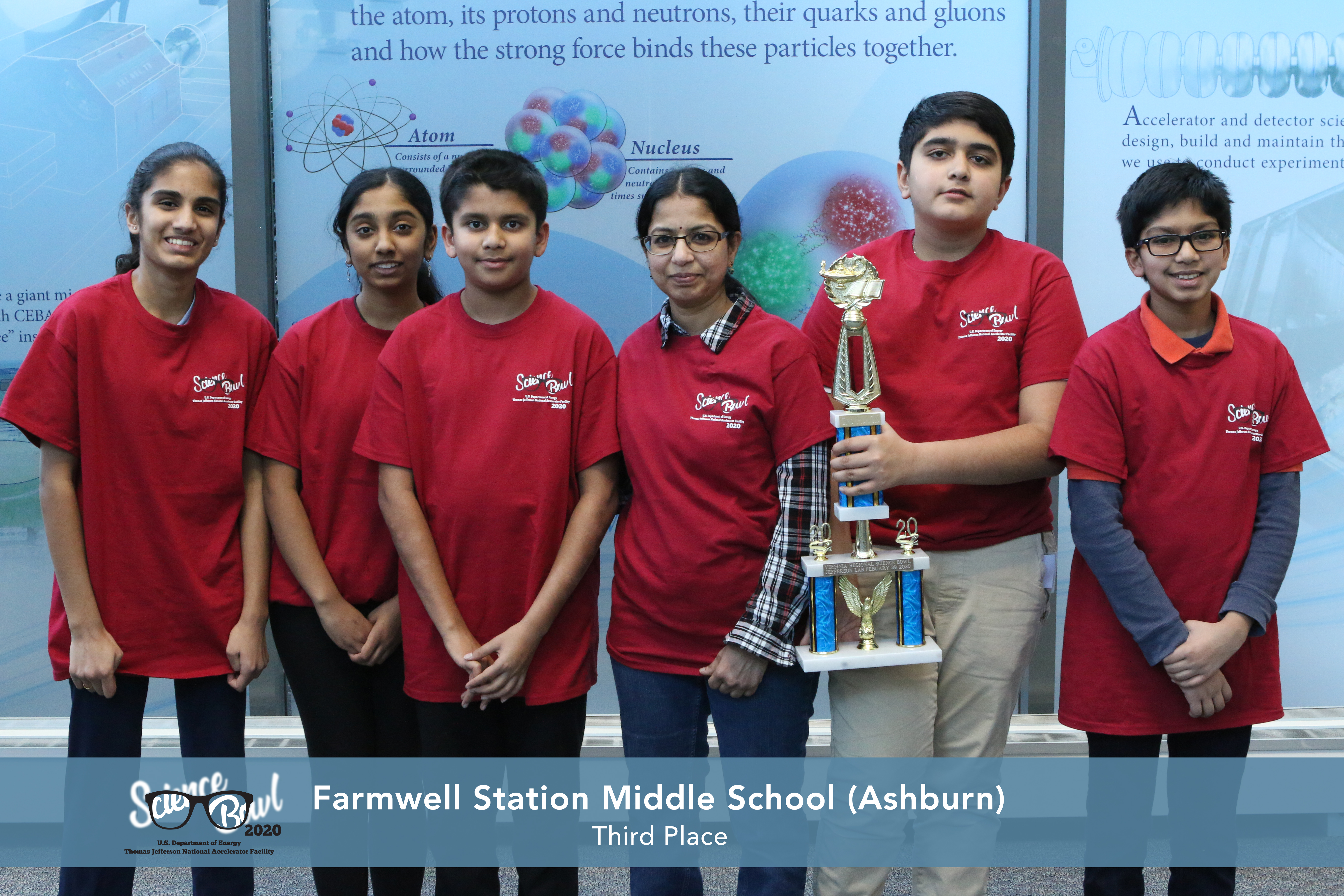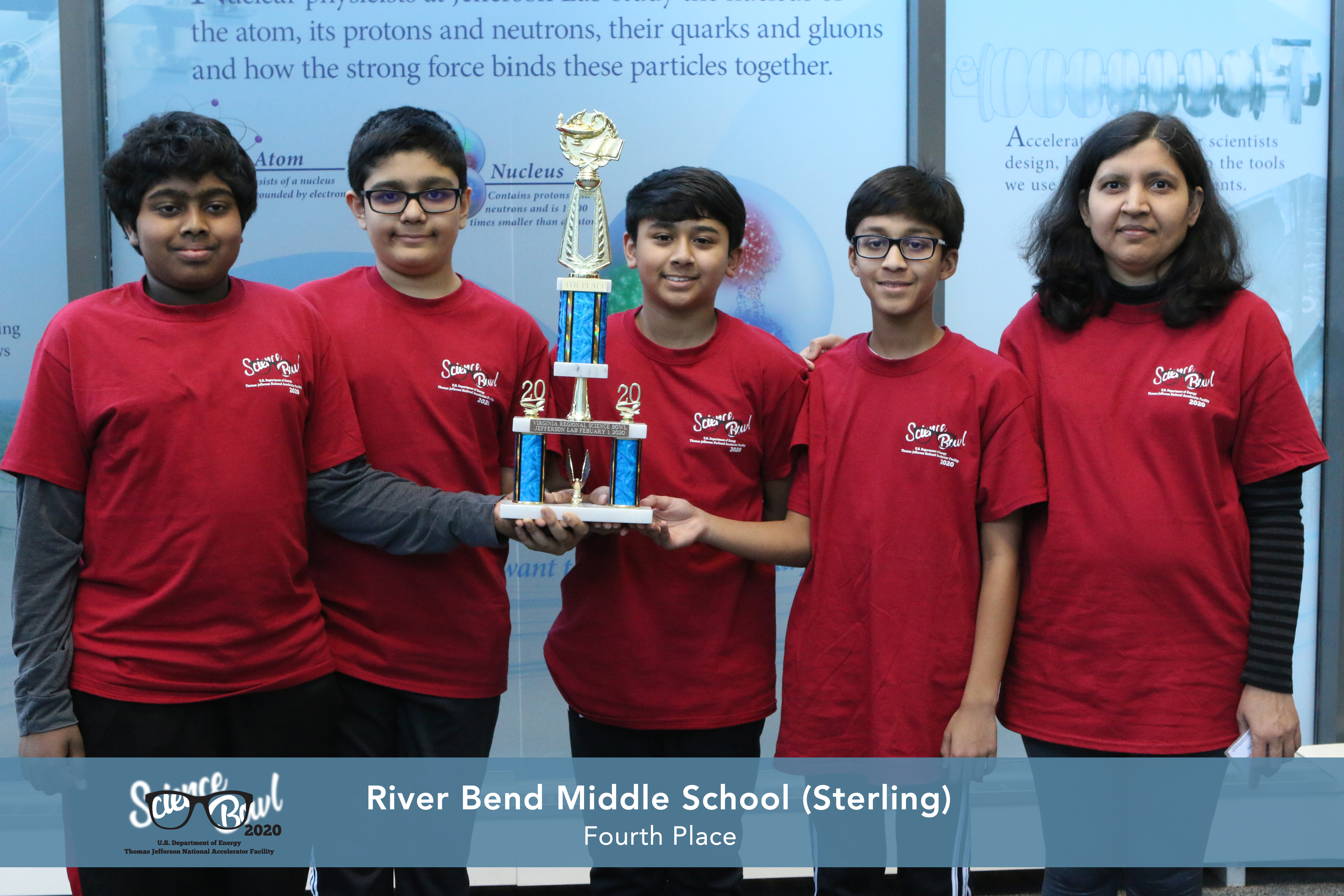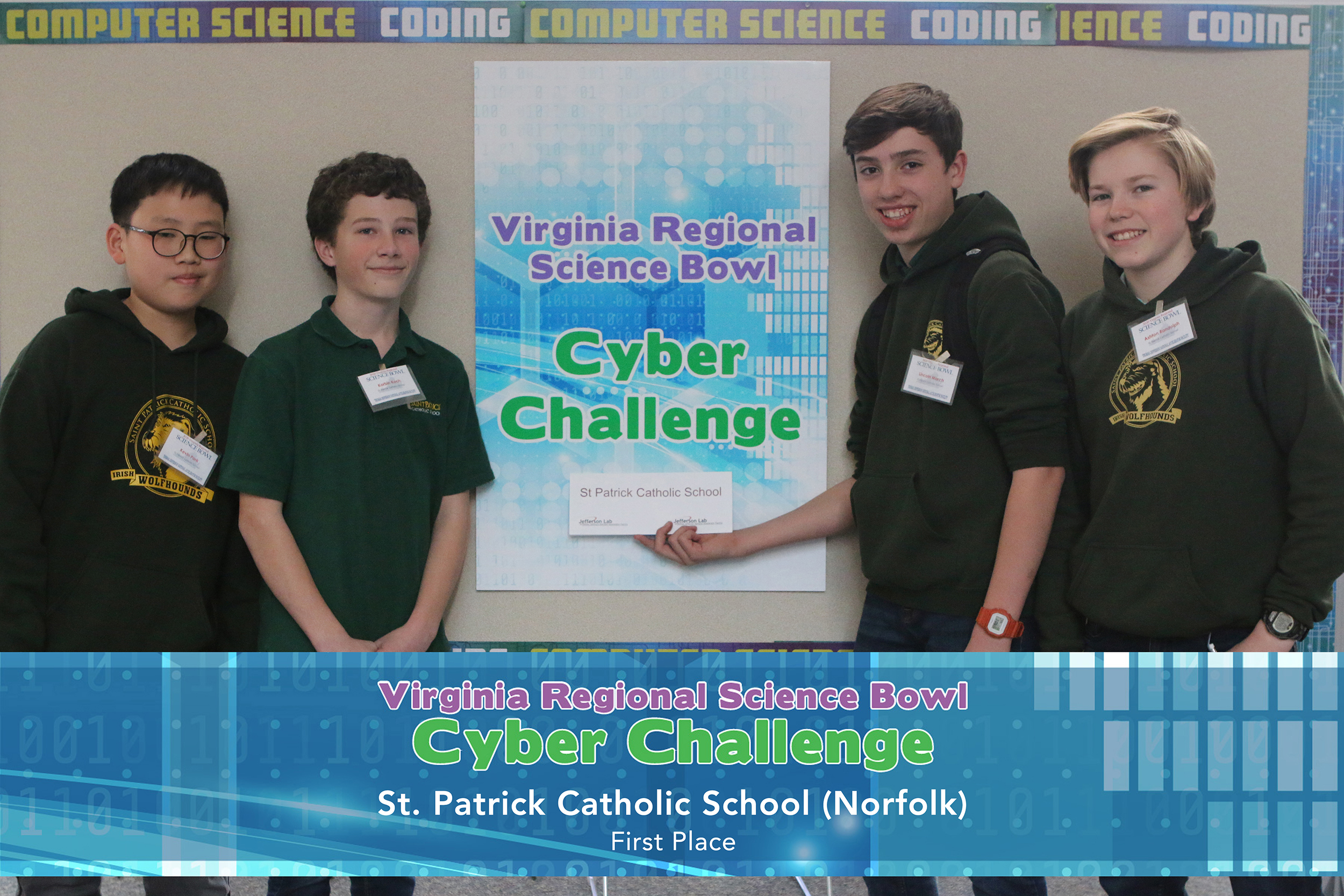Jefferson Lab hosted 14 teams from across Virginia during the annual Middle School Science Bowl on Saturday, Feb. 29, 2020
NEWPORT NEWS, VA – Eagles. Wolfhounds. Lions. An assortment of various mascots displayed on t-shirts, sweatshirts and backpacks entered the U.S. Department of Energy’s Thomas Jefferson National Accelerator Facility atrium on Saturday, Feb. 2, 2020. The various mascot-emblazoned merchandise belonged to students from across Virginia ready to compete in the Middle School National Science Bowl®. The competition is designed to encourage students to excel in math and science and to pursue careers in science, technology, engineering and math.
“The Science Bowl is a competition that tests the speed of the mind,” coordinator for the Science Bowl, Rhonda Bell says. “The questions are very challenging and requires students to learn beyond their current curriculum.”
The winners of this year’s Virginia Middle School Science Bowl are:
- Longfellow Middle School (Falls Church)
- Rocky Run Middle School (Chantilly)
- Farmwell Station Middle School (Ashburn)
- River Bend Middle School (Sterling)
Longfellow Middle School was awarded an expenses-paid trip to the National Science Bowl® finals to be held in Washington, D.C., April 30-May 4, 2020. In 2020, 9,000 high school and 5,000 middle school teams will head to the area to compete for the national title.
“There’s nothing quite like a group of young, energetic future scientists and engineers eager to share their knowledge all in one place. On Saturday, the lab was able to witness some of Virginia’s best and brightest students rapidly answer an extensive series of STEM-related questions in order to advance to the National Science Bowl,” says Stuart Henderson, Jefferson Lab Director.
New this year was the Cyber Challenge; an event where students participated in a sub-competition during the Science Bowl. Students who exited the Science Bowl competition early were provided cybersecurity problems to solve as teams to compete for a chance to be named the Virginia Cyber Challenge champs. The winner of the Cyber Challenge was St. Patrick Catholic School from Norfolk.
The National Science Bowl® has been sponsored annually by the Department of Energy’s Office of Science since 1991. Since its inception, more than 305,000 middle and high school students have participated in tournaments around the country.
“It’s so incredible seeing these students work together and problem-solve so quickly,” Bell said of both competitions.
The U.S. Department of Energy Office of Science manages the National Science Bowl® and sponsors the NSB finals competition. The Department of Energy's Office of Science is the single largest supporter of basic research in the physical sciences in the United States and is working to address some of the most pressing challenges of our time.
“We’re always delighted to host these prospective scientists, engineers, mathematicians and technology enthusiasts. It’s like seeing a glimpse into the future of the lab, and that future looks very promising indeed,” Henderson added.
The next Virginia Middle School Science Bowl has been scheduled for March 6, 2021.
Contact: Rebecca Duckett, Jefferson Lab Communications Office, 757-269-6809, duckett@jlab.org


